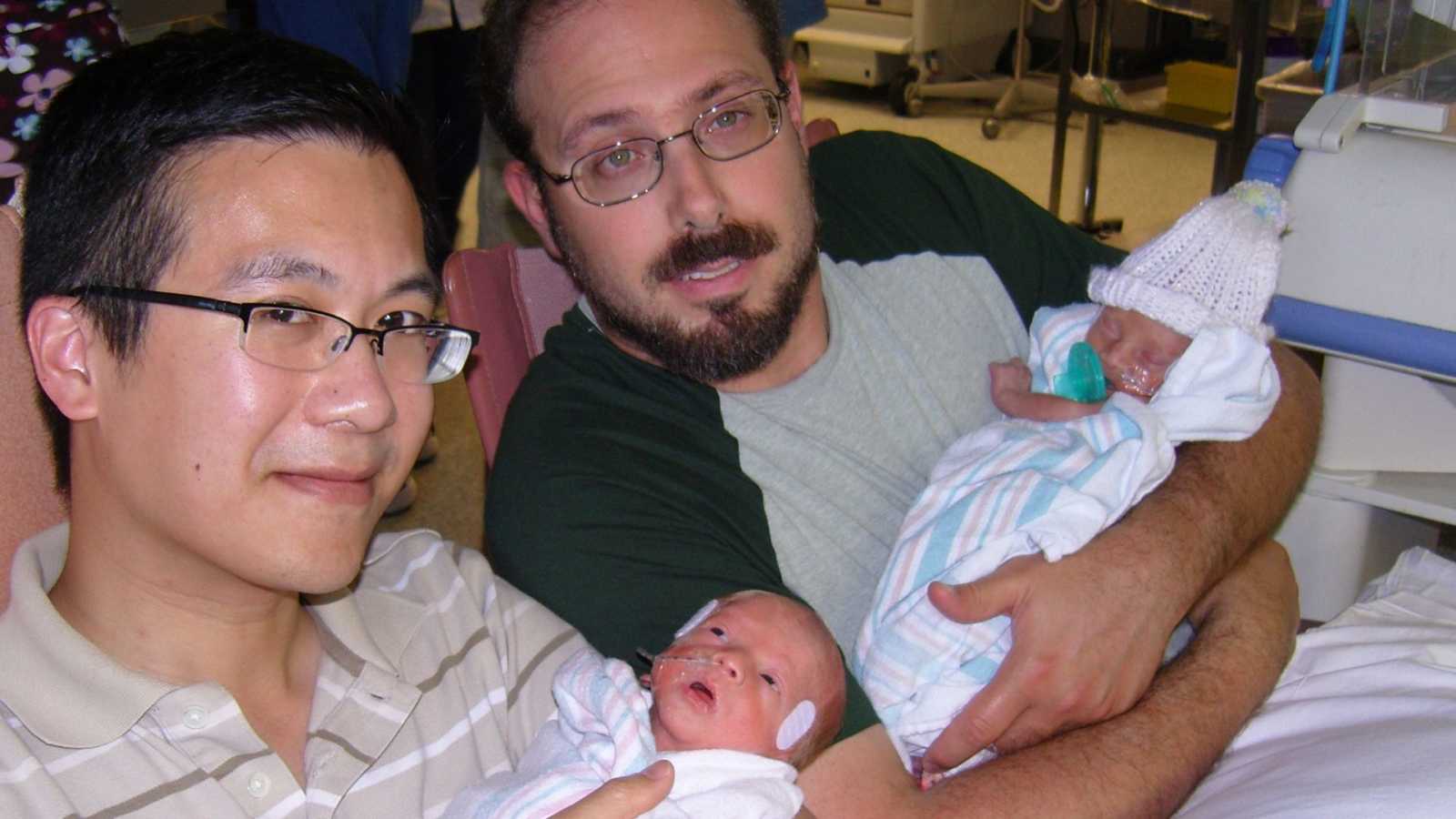“When discussing the journey to parenthood, gay couples often like to use the word ‘journey’. And understandably so. The process of becoming a parent as a gay individual is long, complicated, and uncertain. In our own situation, we’ve found the term to be appropriate. Our ‘journey’ to parenthood and marriage (in that order) took us across the country, took us around the globe, and took us 20 years.
Josh and I met back in New York City and started dating in 1997. From the early days of our relationship, our most serious conversations about the future had always taken place while traveling. We would escape the crowded city on weekend getaways and have earnest conversations about our future, staring out into the open road before us.
Josh comes from a large family and always wanted to have children. I agreed but was hesitant. I had taught myself not to think too long and hard on something that is unlikely to come to fruition. After all, it was the 90s and gay men having babies together was still tremendously rare.

Josh moved to Florida in 1999 to help out with his family business and I followed as soon as I finished school. We found ourselves in a state that proved rather hostile to gay people. At the time, Florida still had laws that forbid adoption for gays couples. Circumstances did not appear favorable, but Josh was undeterred. He continued with his own research about our options. I distinctly remember where I was sitting in our home in 2005 when Josh approached me with excitement. ‘You need to look at this book!’
The book was about gay fathers and described the process of gestational surrogacy in California, where laws were more favorable for same-sex parents. We learned it was possible to work with a woman who would undergo in-vitro fertilization (IVF) and carry a pregnancy for us. We would have to make the necessary genetic donation on our end and the donated eggs would come from an anonymous donor. Then, prior to the birth, a family court judge would issue a judgment declaring us to be the intended parents and instruct the county clerk to record the birth certificate with both our names.
After a great deal of discussion between Josh and I, we made a trip out to California to visit an agency that arranged surrogacy contracts. Immediately, my enthusiasm grew. Circumstances appeared to align perfectly. The temporarily insane American housing market told us our modest home purchased a few years earlier was now worth twice the amount. We took out a home equity line of credit and set up a trust to fund the expensive process out in California. We were paying top dollar for a concierge-type service and the agency in California carefully coordinated the process from beginning to the end. They connected us with a prestigious IVF doctor in Beverly Hills. They had their lawyers prepare our case for the family court process and they compiled a large database of potential egg donors for us to select from. We had it all.
After our first trip out to California, we became very excited about surrogacy. We shared with family and friends about our plans. Only one childhood friend of mine reacted negatively to the news. Everyone else was very happy for us. Our own parents were especially intrigued by the prospect of having grandchildren they had years ago concluded would never happen. Naturally, there were many questions about the specifics of the procedure and my parents were particularly curious. We happily answered all questions, except this last one about genetics.
Because I am of Asian descent and Josh is Jewish, we always planned to have children who would be mixed race and hopefully reflect both our heritages. So, we sifted through the numerous Hollywood blonde headshots to find profiles of Jewish and Asian egg donors. We selected the egg donor that we felt had qualities we would value in our children. Then, we made the complementary sperm donation from our side of the equation to make the embryos for implantation.
Josh has always said that the part of the process the agency in California aced was matching us with our surrogate Marie. We filled out lengthy questionnaires and constructed an introductory profile of ourselves, describing our hopes and expectations. They searched their pool of carefully screened prospective surrogates for women with similar expectations and presented our profile to make a match. Marie has told us that we were actually not the first profile sent her way but we were the first she agreed to.
The agency arranged a meeting for us in October of 2006. Before we met Marie for the first time, we had a consultation with the IVF doctor who had already examined Marie earlier. When we told him we were meeting Marie later that day, the doctor started to gush about how lovely she was! He said, ‘You have to woo her and make sure she picks you guys!’ On our way to meet Marie we dutifully picked up flowers and chocolate for this first ‘date’, and we hit it off immediately. Marie was a military wife raising two small children. She lived with her husband stationed on a base outside San Diego.
By coincidence, Marie was cycling in synchrony with our chosen egg donor, so egg retrieval, fertilization, and embryo transfer were all scheduled within days after we accepted Marie as our surrogate. A month later, we were back on a plane out west. On the big day of embryo transfer, our IVF doctor told us that only a few embryos developed, but the ones that did were of good quality. This meant that we would not have enough left over to freeze and try for a second cycle if the first transfer did not take.
Knowing we’d probably have to start the egg donor selection all over if our first try did not work, we decided to take the ‘all in’ approach and transfer the maximum number of embryos the doctor would allow — three. We made this decision with the knowledge that we felt capable of handling a single baby or twins but would probably ask to reduce a triplet pregnancy down to twins because high-order pregnancies are risky and we were not gambling with our own bodies, but Marie’s. Luckily, we did not have to make that hard decision because we were blessed with the news over the holidays. We were pregnant with twins!
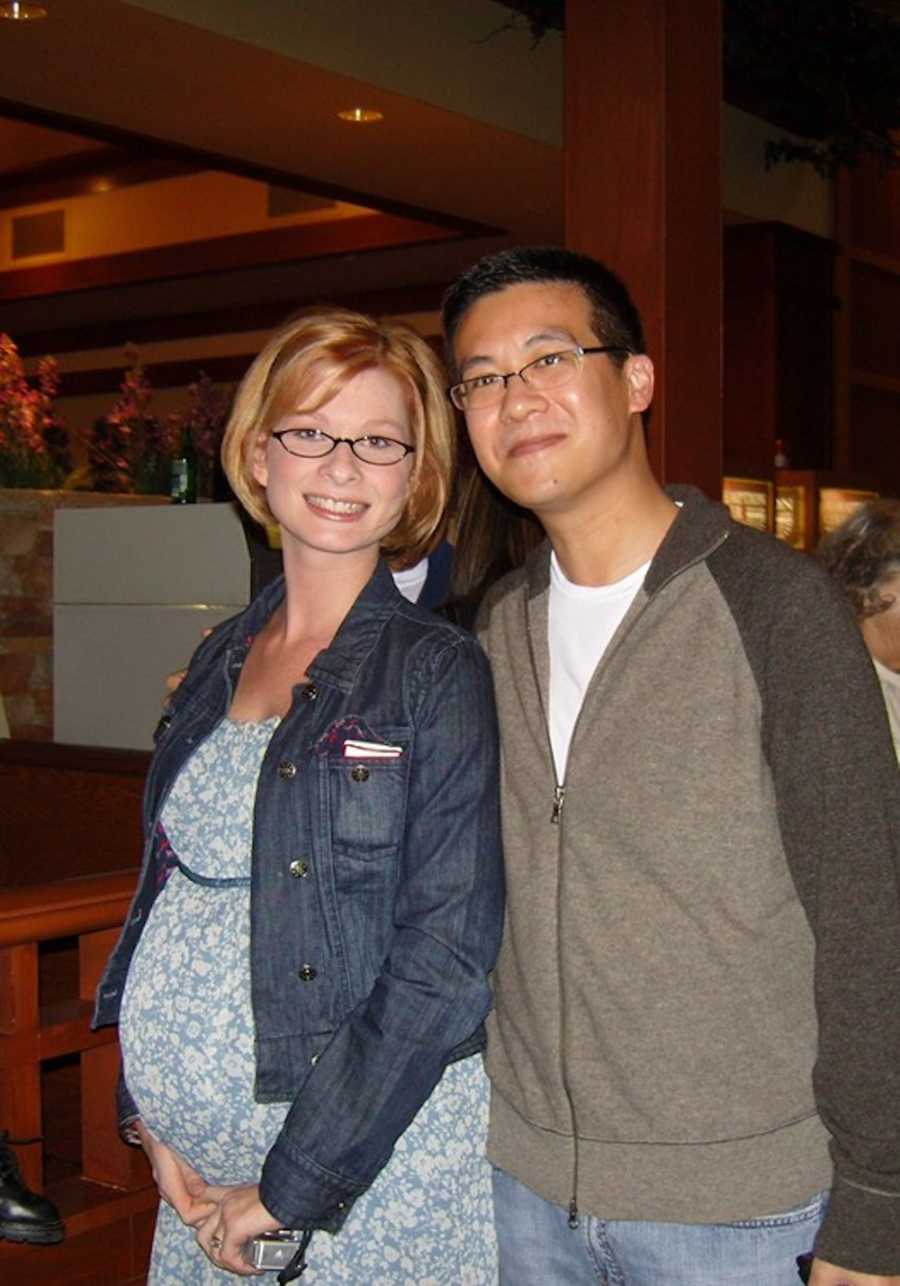
Over the course of the next several months, Josh and I took turns traveling from Florida to California monthly to attend medical visits and spend time with Marie and her family. We both attended an OB/GYN appointment in the early second trimester for a 3D ultrasound and learned we were expecting two boys.
On the last weekend of June, Josh went out to California to attend the 32-week ultrasound. Things appeared to be going as planned. He finalized plans with a hotel to check in for one month. Two weeks later, I picked him up at the airport early Monday morning so we could both go to work. By the time we were getting ready for dinner Monday night, we were receiving calls from California that something was amiss.
Marie had noticed a light sensation in her chest earlier in the day after doing some housework, but she attributed it to stress and fatigue. She drove herself to a scheduled OB/GYN visit only for the doctor to discover she was in ventricular tachycardia with a very rapid heartbeat. The doctor ordered her to be taken to the hospital immediately and a team of doctors tried to decrease her heart rate. But the medications they were using seemed to be having the side effect of inducing preterm labor at 32 weeks gestation. We received the phone calls in Florida feeling powerless, learning that an emergency c-section in California was becoming inevitable — and we were not going to be there.
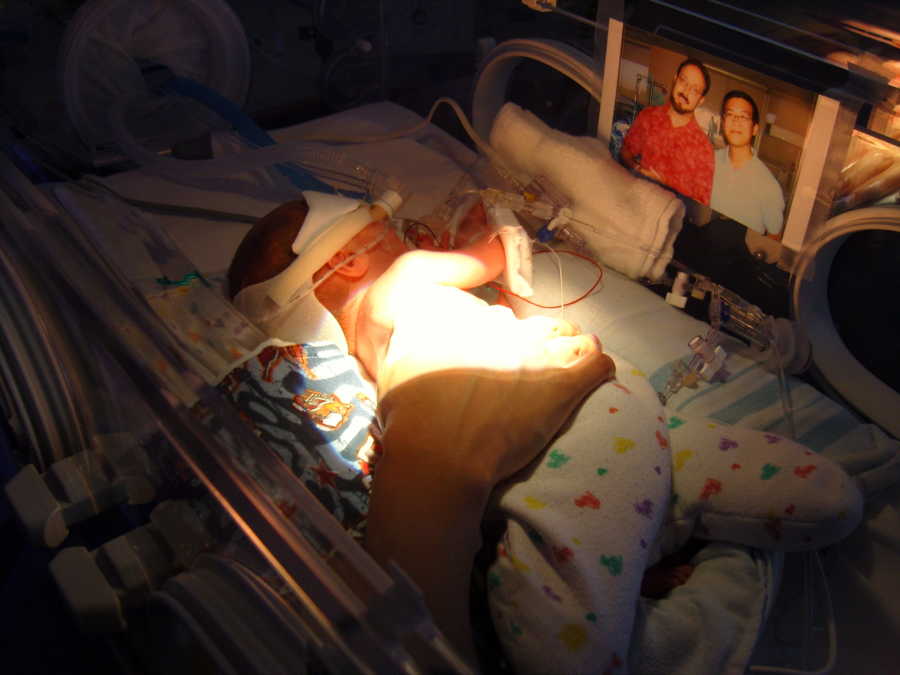
Fraternal twin boys JJ and AJ were born. Were transferred immediately to the neonatal intensive-care unit (NICU). We booked the earliest flight we could and got on the very same plane Josh had just flown on 24 hours prior. We rushed directly to the hospital and checked with Marie to see that she was recovering well before we went to meet our sons for the first time.
Seeing these two 4 pound bundles in their incubators for the first time was very emotional and one of the only times in my life I have seen Josh cry. We felt overwhelmed and terribly worried not knowing if AJ and JJ would be okay.
The hospital staff were very kind and treated us like any other parents visiting their children in the NICU. The NICU nurses took our picture and placed it in the incubators so JJ and AJ could become familiar gazing at their new parents. They proceeded to give us a wonderful crash course in caring for a premature infant, including everything from feeding issues to tiny diaper changes. We spent the next five weeks camped out in an extended-stay hotel closeby, visiting every few hours to participate in feeding and baby care.
Marie had graciously agreed to pump breast milk to help the twins, so we also served as ‘the milk men’ picking up frozen bottles from the military base and shuttling it to the NICU so we could thaw it and feed it to the boys.
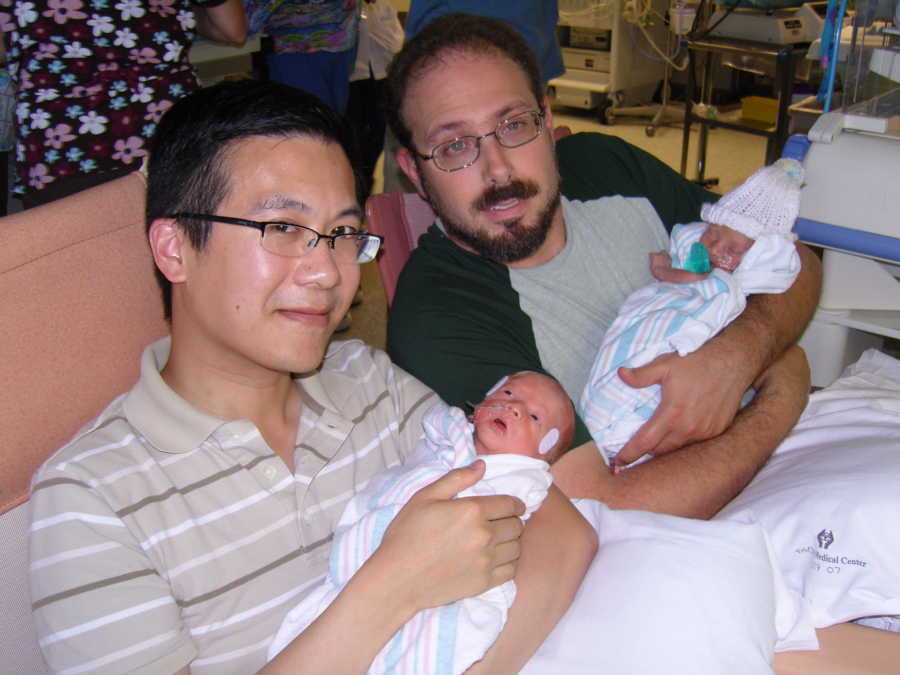
The boys had a few typical preemie issues with feeding and breathing, so when they were finally discharged from the hospital in early August. They were sent home with apnea monitors strapped to their chest to ensure that their breathing remained regular. We were instructed to spike their bottles with pharmaceutical caffeine to ensure they never fell into a deep enough sleep and forgot to breathe.
A week after being released from the hospital, the boys were cleared to fly. We said our goodbyes and left California to come back home to Florida. However, we remain in contact with Marie to this day. Whenever we post photos of the boys to Facebook, she is often the first to comment!
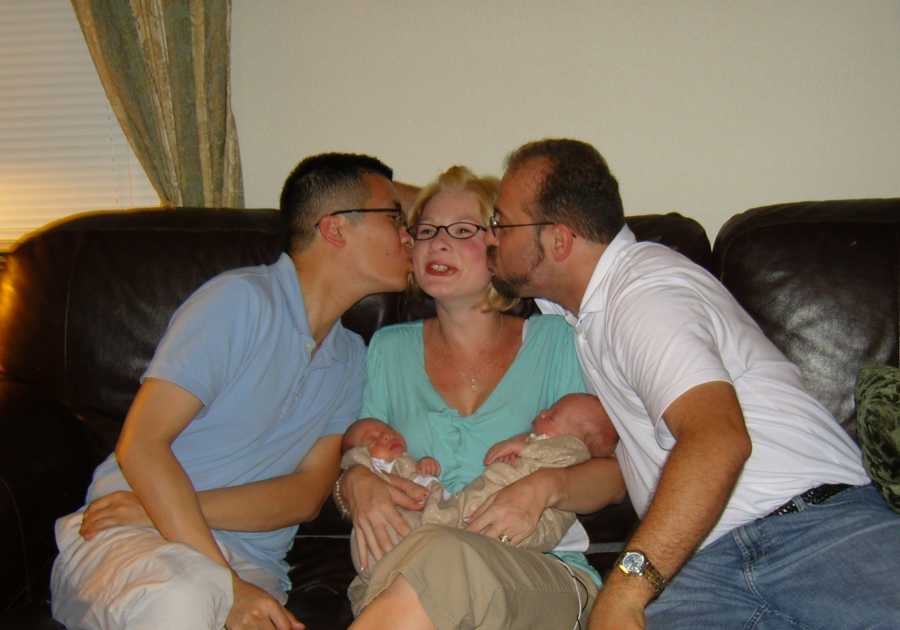
When AJ and JJ were 4 in early 2012, I clearly recall a moment on one of our frequent trips to nearby theme parks in Florida. I sat down to rest on a bench and watched the boys run off to play in the distance. They were becoming more and more independent. I felt a weariness in my bones, my subconscious calculations became conscious, and I mumbled out loud, ‘37 plus 18 is 55.’ On a weekend getaway to New York to celebrate our 15th anniversary a few weeks later, I told to Josh over a romantic dinner, ‘Ever since the boys were born, I have been constantly adding 18 to our ages. If we have another right now, how old will we be before all the children are grown?’ I confessed to Josh my yearning for another child on that trip. Josh was not as sure, but decided he was willing to go along for the ride. We began to plan for our next journey.
Times had changed, and the economy of 2012 was not nearly as conducive to baby making. We made furtive communication with the agency in California, only to find that financing an identical process five years later would be much more difficult. We had paid off the line of credit and I had a job that paid more, but Josh’s business was not doing nearly as well as years before. However, Josh’s research saved the day yet again.
We came across the concept of international surrogacy. Following the lead of agencies like the one in California, operations were springing up in Latin America and Asia, offering gestational surrogacy at a much lower cost when compared to the U.S. We set about investigating our options. After briefly considering Latin America, we honed in on India because it offered modern medicine on par with U.S. standards at lower cost.
In October 2012, my sister Annie and brother-in-law Rahul came to Florida to stay for 10 days, so they could take AJ and JJ to school and to trick-or-treat on Halloween while Josh and I made our first trip to India. We were very quiet about our plans. We were secretive this time because we felt there was a lot of uncertainty pursuing international surrogacy.
Once we met with the clinic director in Mumbai, India, we felt comfortable enough to proceed. We got the sense that she genuinely cared for the welfare of these surrogates. We were introduced to our potential surrogate, Pavitra. Because of language and cultural barriers, we knew that our relationship with Pavitra would never be like our relationship with Marie. Nonetheless, she had a beaming smile and that didn’t need a translator.
We dove into the IVF process again using an egg donor we had selected via e-mail correspondence prior to the trip. Before our return to the U.S., we politely asked that the number of embryos transferred on this first try be limited. We were trying to aim for a singleton.
Whereas our surrogacy process in California involved almost daily phone calls, communication from India was sparse. Josh and I were constantly checking for emails and I will never forget kneeling at Josh’s desk as he opened one such eagerly awaited email to be greeted with one line: ‘You have twins. Congrats.’ I looked at Josh’s face staring speechless at the computer screen and asked, ‘Are you okay?’
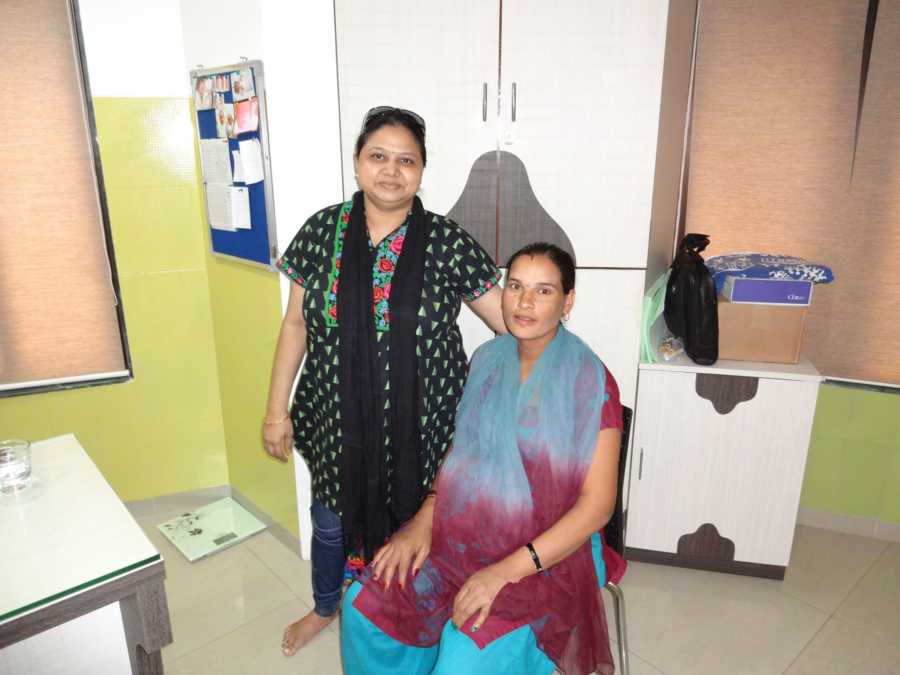
We would be okay. We already had more than 5 years experience as twin parents, and had become quite good at juggling. I often think that I would have ended up a helicopter parent if being a parent of twins hadn’t forced me to multitask from day one. And besides, having twins again would double the chances of my dream to have a daughter.
Baby girl DJ and baby boy MJ were born in July 2013. They ended up being born, by coincidence, on the day before their older brothers’ birthday. They did not have the prematurity issues, so they were discharged uneventfully after three days in a regular hospital room.
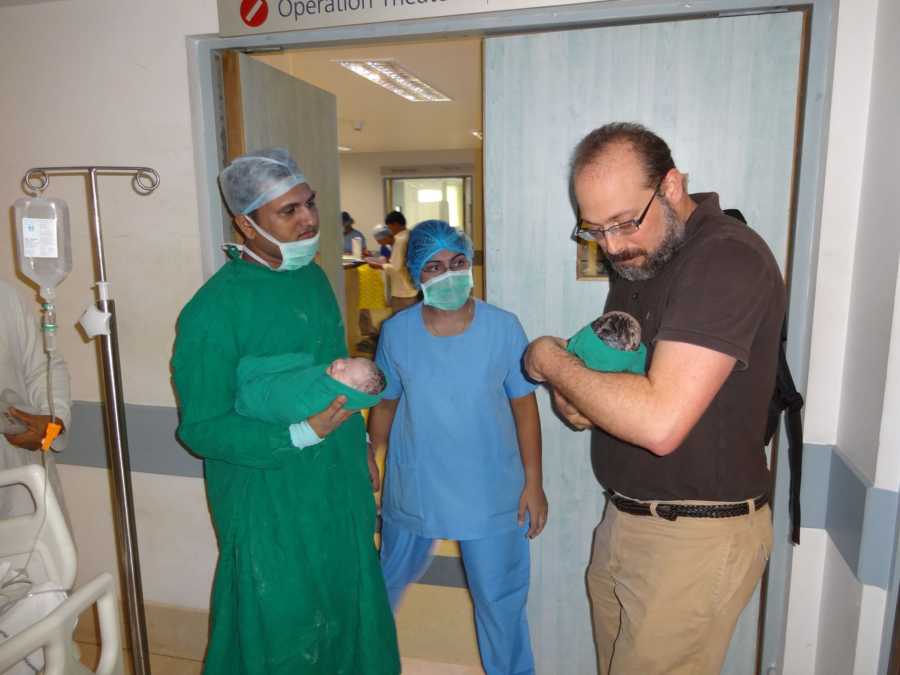
The phase of international surrogacy that we had anticipated to be most difficult was getting the paperwork necessary to bring our children home to the U.S. We spent a month in a hotel in India arranging for the foreign-born US birth certificates called CRBAs through the U.S. Consulate, and obtaining exit visas from the Indian government on the babies’ U.S. passports to allow them home.
Since then, the government of India has become hostile to surrogacy and has banned the practice for almost everyone. We’ve also been dismayed to see recent news stories of our own U.S. government denying citizenship to babies of gay parents born abroad. We take solace in the fact that we have been able to have our younger kids before these legal barriers arose abroad, but are still very sad and angry for the many gay intended parents who have tried to come after us and have found these new roadblocks in the way.
Where some barriers have arisen for gay couples, other roads have opened up. We were overjoyed when marriage equality was recognized nationwide in the U.S. in 2015 and so many same-sex couples rushed to be married after waiting so long.
Josh and I had been together for more than 18 years at that point, and we decided that we would wait for a date with special significance. In March 2017, on the exact date of our 20th anniversary, we held a wedding to be witnessed by almost 200 of our friends and family, but most importantly by our own four children.
AJ, JJ, DJ and MJ were old enough to participate. DJ was the flower girl, MJ was the ring bearer, and the older boys AJ and JJ read poems before our vows.
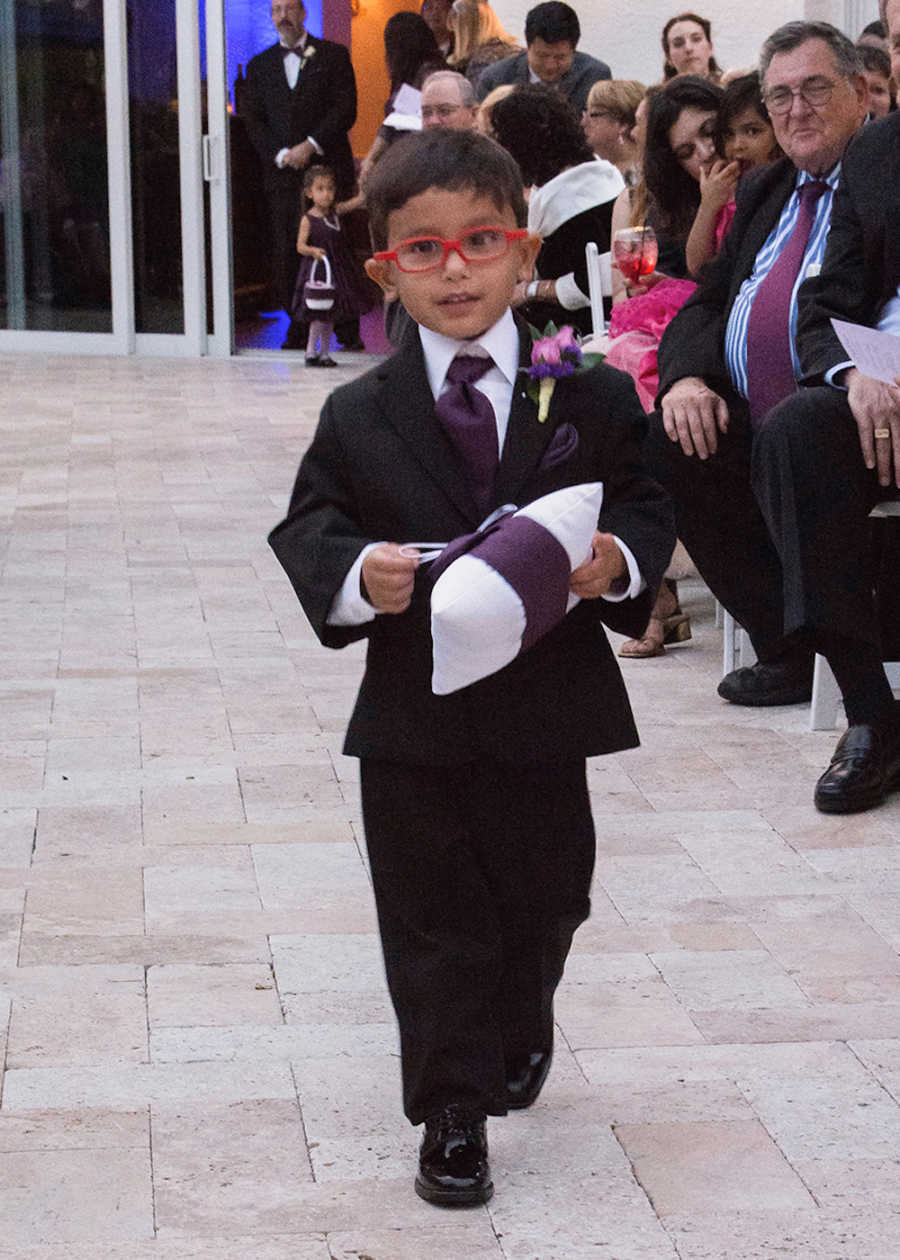
I started my vows on that day with these words:
‘What a difference 20 years makes! When our relationship first began, I knew we were at the beginning of something big, but never could I have predicted how much the world would change, and how far our lives together would take us. Never could I have imagined that we would gather here 20 years later with so many friends and family to be formally and legally married. Over the years we have come to know each other so well that a lot between us has been understood but has gone unsaid. So, on this day, on this occasion, with our children, our extended family and our friends as witnesses, I will say out loud to you what you already know. I will say what I hold in my heart for you now and forever.
I love you.”
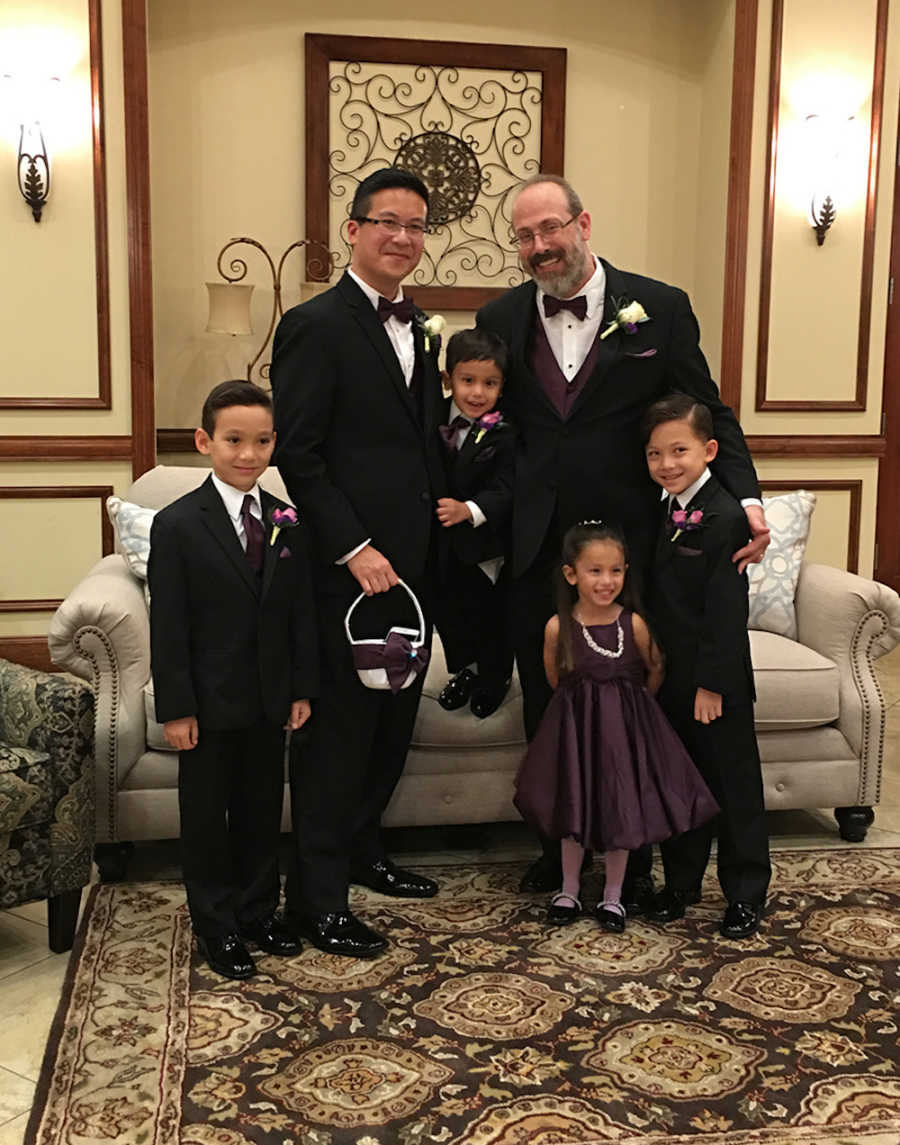
This story was submitted to Love What Matters by David H. You can follow his journey on Instagram here and his blog here. Do you have a similar experience? We’d like to hear your important journey. Submit your own story here, and subscribe to our best stories in our free newsletter here.
Read more beautiful stories about surrogacy here:
Please SHARE this story on Facebook to encourage others to live life to the fullest.

